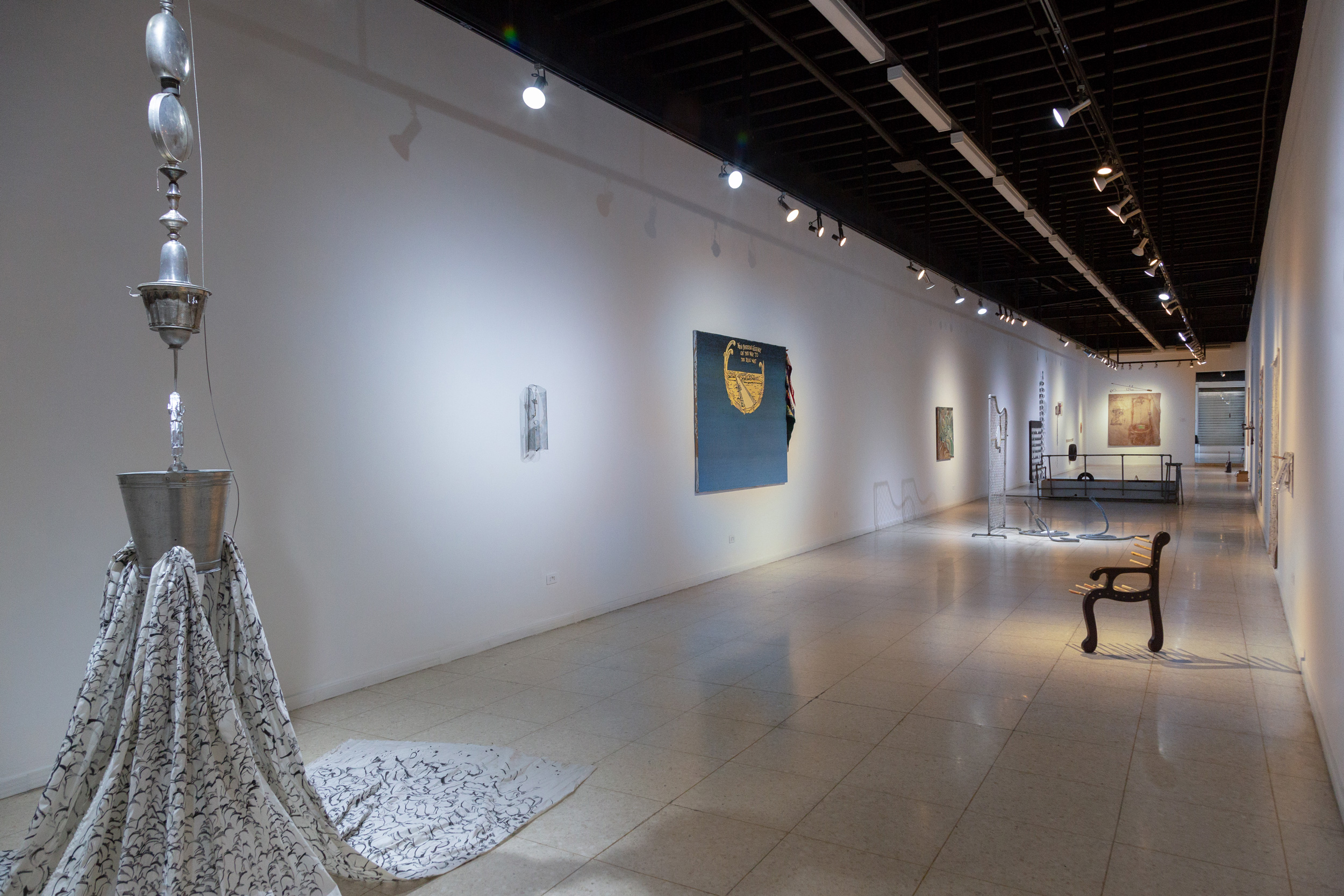 The value of the immovable, of what endures and remains in the artist’s creative environment, often goes unnoticed before the critics’ eyes, those of the public and the entire Art Institution. However, like a cabinet of Renaissance curiosities, these studios and workshops embrace art pieces, not on display yet, some unfinished or some isolated pieces belonging to a larger collection.
The value of the immovable, of what endures and remains in the artist’s creative environment, often goes unnoticed before the critics’ eyes, those of the public and the entire Art Institution. However, like a cabinet of Renaissance curiosities, these studios and workshops embrace art pieces, not on display yet, some unfinished or some isolated pieces belonging to a larger collection.
This involves a diversity of artistic objects serving as both witnesses and inspiration. They are then witnesses of the passage of time, of various stages or themes addressed by their creator; they are marks exempted from the lost steps of a gallery; but a latent trail in the author’s day-to-day labor, who envisaged them. They flaunt with inspiration for being a part of, for participating and meddling, directly or indirectly, in a new idea, in a continuing or different project.
These pieces barely come to light. Emblematic and comprehensive, I remember in this sense the exhibition Almacenes afuera (2013) at the Museo Nacional de Bellas Artes (National Museum of Fine Arts), where the audience could appreciate part of that flux remaining in the shade, in the storerooms where, however, art cries out for visibility.
Fortunately, an artist of our time sensed the phenomenon and decided to settle Deuda (The debt) with art pieces of his own just clung to the workshop; or perhaps the circumstances or himself him, so determined. This is René Francisco Rodríguez, a renowned creator, curator and professor of arts, who in the exhibition of the same name has displayed fragments of three decades of work (1988-2018) at the gallery La Acacia.
He, who at the beginning of his career and until 1996 was recognized as part of the creative duo René Franciso and Ponjuán, and who also transcended due to the impact of his artistic-pedagogical initiatives; since November 9th has stripped himself of his creative environment privacy to exhibit those art pieces coexisting in the maelstrom of his workshop. Thus, the impeller of projects undertaken through Desde una Pragmática Pedagógica (DUPP) (From a Pedagogical Pragmatics), gathers snippets of his artistic background in Deuda, his most recent personal exhibition.
In an atmosphere where the art-life binomial is evident, René bets on the tools joining in the creative process, makes them visible and turns them into an artistic object from dissimilar formal and material solutions. Thus, the morphology of the painter’s palette is reiterated in the exhibition, although sometimes is overlapped by the unusual or battered state of its materials, or by its array within the greater whole to which it is attached. On the other hand, the brush and the painting knife, just metamorphorized or in their pure forms, leave their mark in the gallery rooms, where there is also room for singular iconographic pieces alluding to religious syncretism.
The tubular structures, the hallmark of part of his work, unfold themselves through hydraulic pipes, toothpaste tubes, pigments, or other vials, which in René Francisco’s works, seemed to come to life through installations and drawings. The silver toothpaste tubes, by nature devoid of any identity, here are embodied or blurred in the crowds depicted on the canvases or in the larger structures, they comprise. Works and fragments exhibited at La Acacia mimic the series Tubosutra and Todo uso es un abuso (All use may be an abuse); as well as the period in which the artist worked as a duo along with Eduardo Ponjuán. The pictorial procedure linking him to pointillism, and the artistic reference from Joseph Beuys given the social vocation of his work, are also not overlooked on the exhibition.

Deuda comes then at the right time and becomes a sort of halt on the road to come closer to the artist’s everyday life, creative background, motivations and aspirations. So let this effort be an event praiseworthy for its documentary value, for serving as a gathered record of thirty years of creation. So consider then this a Settled Debt.
–Indira Carrillo

